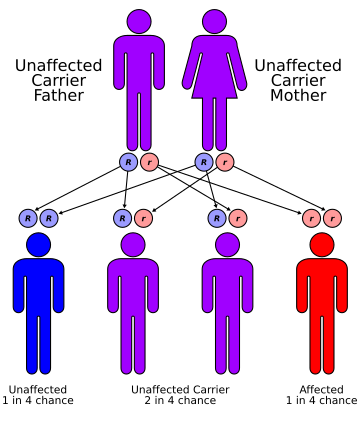CHIME syndrome, also known as Zunich–Kaye syndrome or Zunich neuroectodermal syndrome, is a rare congenital ichthyosis first described in 1983.[1] The acronym CHIME is based on its main symptoms: colobomas, heart defects, ichthyosiform dermatosis, intellectual disability, and either ear defects or epilepsy.[2] It is a congenital[3] syndrome with only a few cases studied and published.[2]
Symptoms and signs
Associated symptoms range from things such as colobomas of the eyes, heart defects, ichthyosiform dermatosis, intellectual disability, and ear abnormalities. Further symptoms that may be suggested include characteristic facies, hearing loss, and cleft palate.[citation needed]
Genetics
CHIME syndrome is considered to have an autosomal recessive inheritance pattern. This means the defective gene is located on an autosome, and two copies of the gene, one from each parent, are required to inherit the disorder. The parents of an individual with autosomal recessive disorder both carry one copy of the defective gene, but usually do not have the disorder.[citation needed]
Diagnosis
This section is empty. You can help by adding to it. (May 2017) |
Treatment
Treatment with isotretinoin may induce substantial resolution of skin lesions, but the risk of secondary infection remains.[2]
See also
References
Bibliography
External links
Wikiwand in your browser!
Seamless Wikipedia browsing. On steroids.
Every time you click a link to Wikipedia, Wiktionary or Wikiquote in your browser's search results, it will show the modern Wikiwand interface.
Wikiwand extension is a five stars, simple, with minimum permission required to keep your browsing private, safe and transparent.

